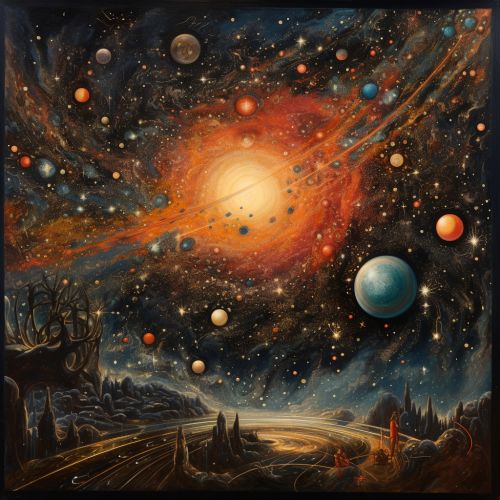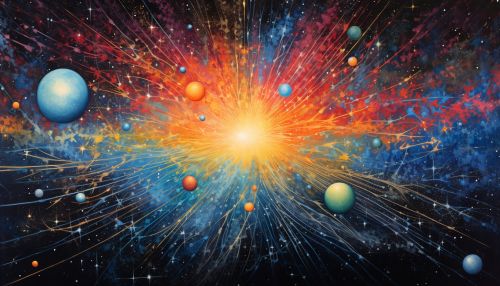Cosmic Inflation
Introduction
Cosmic inflation is a theory in physical cosmology that describes an extremely rapid exponential expansion of the early universe by a factor of at least 10^78 in volume, driven by a negative-pressure vacuum energy density. The inflationary epoch lasted from 10^-36 seconds after the conjectured Big Bang singularity to sometime between 10^-33 and 10^-32 seconds after the singularity. Following the inflationary period, the universe continued to expand, but at a slower rate.


Theoretical Framework
The theory of cosmic inflation is the leading explanation about the first fraction of a second after the Big Bang. The basic process, as originally proposed by Alan Guth in 1980, involves a field which is in a high-energy vacuum state. As the universe expands, the energy density in the field remains constant. However, the total energy of the field (which is the density multiplied by the volume) increases as the universe inflates.
Inflation Field
The inflation field, or inflaton, is a hypothetical scalar field that is theorized to drive cosmic inflation in the early universe. The properties of this field are not yet fully understood, but it is hypothesized that the inflaton field played a key role in setting the initial conditions for the Big Bang.
Quantum Fluctuations
During the inflationary period, quantum fluctuations in the inflaton field could be amplified to produce macroscopic variations in the energy density. These fluctuations serve as the seeds for the growth of structure in the universe (such as galaxies and clusters of galaxies). The theory of cosmic inflation predicts a particular spectrum of initial fluctuations, known as a "scale-invariant" spectrum, which has been confirmed by observations of the cosmic microwave background radiation.
Cosmic Microwave Background
The Cosmic Microwave Background (CMB) is the thermal radiation left over from the time of recombination in Big Bang cosmology. Observations of the CMB have provided the most direct evidence for cosmic inflation. The detailed, all-sky picture of the infant universe created from nine years of WMAP data provides compelling evidence for inflation from the patterns of tiny temperature fluctuations imprinted on the cosmic microwave background radiation.
Inflation and the Big Bang
Cosmic inflation is a modification of the Big Bang theory. The Big Bang, as traditionally understood, was the moment approximately 13.8 billion years ago when the universe expanded from an extremely hot and dense state to rapidly cool and expand, a process that continues today. Inflation adds to this picture a period of exponentially rapid expansion of the universe prior to the more gradual Big Bang expansion.
Challenges and Criticisms
While the theory of cosmic inflation is widely accepted within the cosmological community, it has not been without its critics. Some have proposed alternative theories for the early universe and the origins of the cosmic microwave background radiation. Others have pointed out that the theory of inflation is not yet a complete cosmological model, as it does not explain why the inflationary period started or why it ended.
Conclusion
Cosmic inflation remains one of the most important and intriguing concepts in modern cosmology. It provides a framework for understanding the early universe and the formation of large-scale structures. While there are still many questions to be answered, the theory of cosmic inflation continues to be a vital part of our understanding of the universe's history and evolution.
